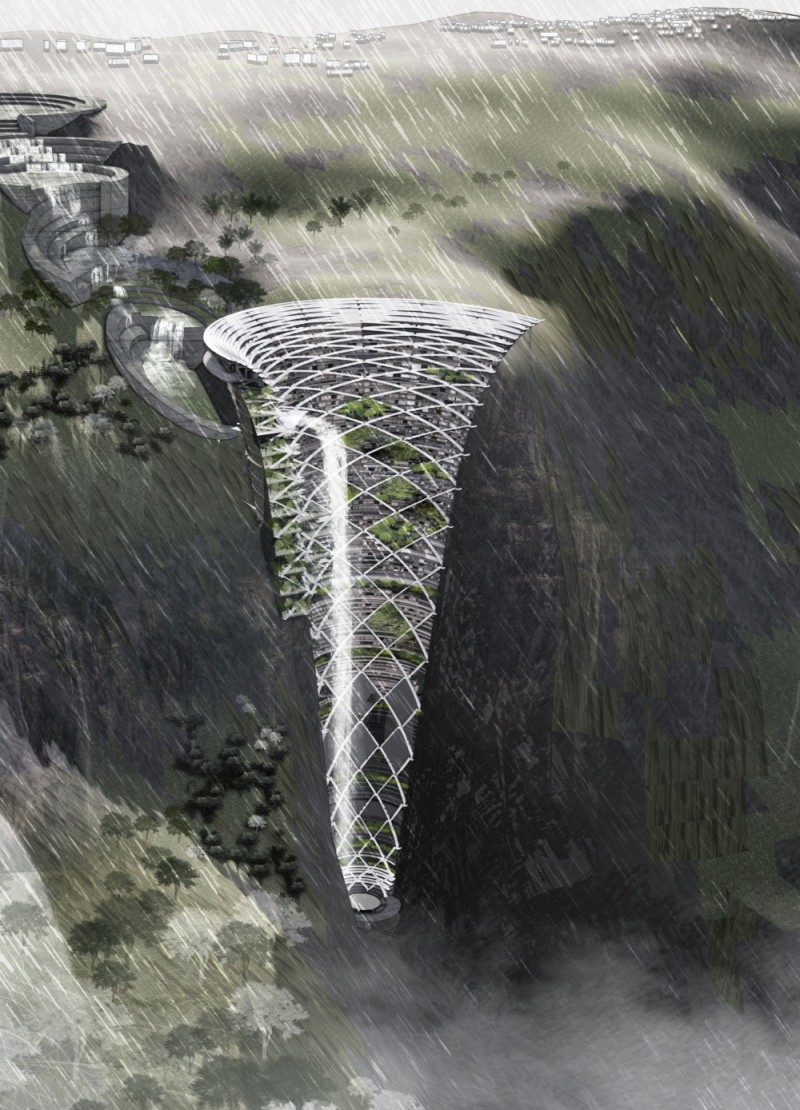5 key facts about this project
The Energy Stepwell project is located in Cherrapunji, Meghalaya, India, a region known for its heavy rainfall and rich green landscapes. The design aims to tackle two significant issues: climate change and energy poverty. A super high-rise building will serve as both a place for people to live and a facility for generating clean energy. By utilizing the abundant rainwater, the design intends to create a self-sufficient environment that provides reliable electricity while supporting the local ecosystem.
High-Rise Design
The building reaches a height of 960 meters, with a residential section positioned at 487 meters. It accommodates around 3,200 households across 80 floors, resulting in a total living area of about 256,000 square meters. This vertical design addresses the need for housing in a compact space. It incorporates residential units with practical energy solutions, making efficient use of the site's geography.
Hydrological Integration
A key feature is the advanced rainwater collection system built into the structure. This system is designed to efficiently capture rainwater falling on the building, with an estimated annual collection of up to 1,035,000 cubic meters. This harvested rainwater is essential for producing hydroelectric power. The energy generated will be used to meet the electricity needs of residents for lighting and cooling, helping to reduce dependency on less sustainable energy sources.
Ecological Considerations
The design integrates natural elements into the building’s façade, including waterfalls and greenery. This green facade not only adds visual interest but also helps support local biodiversity. By bringing nature close to the living space, the project encourages a balance between the built environment and the natural world. This focus on sustainability fits well with the aim of creating a resilient and eco-friendly community.
Functional Layers
The project is organized into multiple functional layers, incorporating systems for electricity storage, sewage treatment, and hydroelectric generation. Each layer serves a specific purpose, working together to support energy production and ecological health. This structured approach reflects a thoughtful response to community needs, showing a commitment to both human well-being and environmental responsibility.
The design features rainwater cascading down built-in waterfalls, enhancing the connection between water and architecture while highlighting the project’s dedication to sustainability.



















































